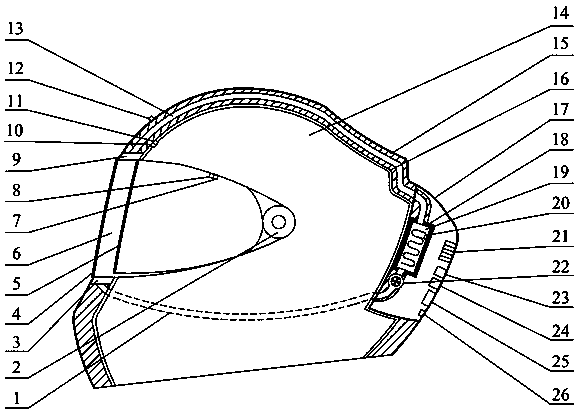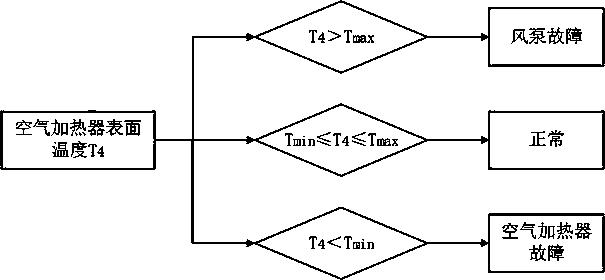Automatic anti-fogging double-lens helmet and using method
A dual-lens and helmet technology, applied in helmets, helmet covers, applications, etc., can solve the problems of poor anti-fogging effect, easy corrosion, easy wear, etc., and achieve reliable anti-fogging, improve safety, and reduce energy consumption. Effect
- Summary
- Abstract
- Description
- Claims
- Application Information
AI Technical Summary
Problems solved by technology
Method used
Image
Examples
Embodiment 1
[0035] Example 1, such as figure 1As shown, the present invention provides an automatic anti-fogging double-lens helmet, comprising a helmet body on which an outer lens 4 and an inner lens 5 are installed, the outer lens 4 has an anti-scratch function, and the inner lens 5 has an anti-scratch function. Direct sunlight function, and the inner lens 5 is positioned at the inner side of the outer lens 4, the outer lens 4 and the inner lens 5 are movably connected on the helmet body through the connection knob 2, so that the outer lens 4 and the inner lens 5 move up and down relative to the helmet body. A cavity 6 is provided between the outer lens 4 and the inner lens 5, the cavity 6 is connected to the anti-fogging mechanism, the anti-fogging mechanism is connected to the automatic control circuit, and the anti-fogging mechanism and the automatic control circuit are paired. Anti-fogging can be achieved by heating the air in the cavity formed by the lens. The anti-fogging mechani...
Embodiment 2
[0039] Embodiment 2, the present invention provides a method for using an automatic anti-fogging double-lens helmet, the steps are as follows:
[0040] S1. When the outdoor temperature is low, manually close the power switch 26; the first temperature sensor 10, the first humidity sensor 11, the second temperature sensor 7, the second humidity sensor 8, the third temperature sensor 12 and the fourth temperature sensor 20 The electrical signals of the measured temperature and humidity are transmitted to the controller 25, and the controller 25 processes the input electrical signals and judges whether the inner side of the outer lens 4 and the inner side of the inner lens 5 are in a fogging state and whether there is a device failure: as figure 2 As shown, the temperature T inside the helmet measured by the controller 25 through the first temperature sensor 10 and the first humidity sensor 11 1 and humidity inside the helmet φ 1 Calculate the dew point temperature T inside the ...
PUM
 Login to View More
Login to View More Abstract
Description
Claims
Application Information
 Login to View More
Login to View More - R&D
- Intellectual Property
- Life Sciences
- Materials
- Tech Scout
- Unparalleled Data Quality
- Higher Quality Content
- 60% Fewer Hallucinations
Browse by: Latest US Patents, China's latest patents, Technical Efficacy Thesaurus, Application Domain, Technology Topic, Popular Technical Reports.
© 2025 PatSnap. All rights reserved.Legal|Privacy policy|Modern Slavery Act Transparency Statement|Sitemap|About US| Contact US: help@patsnap.com



